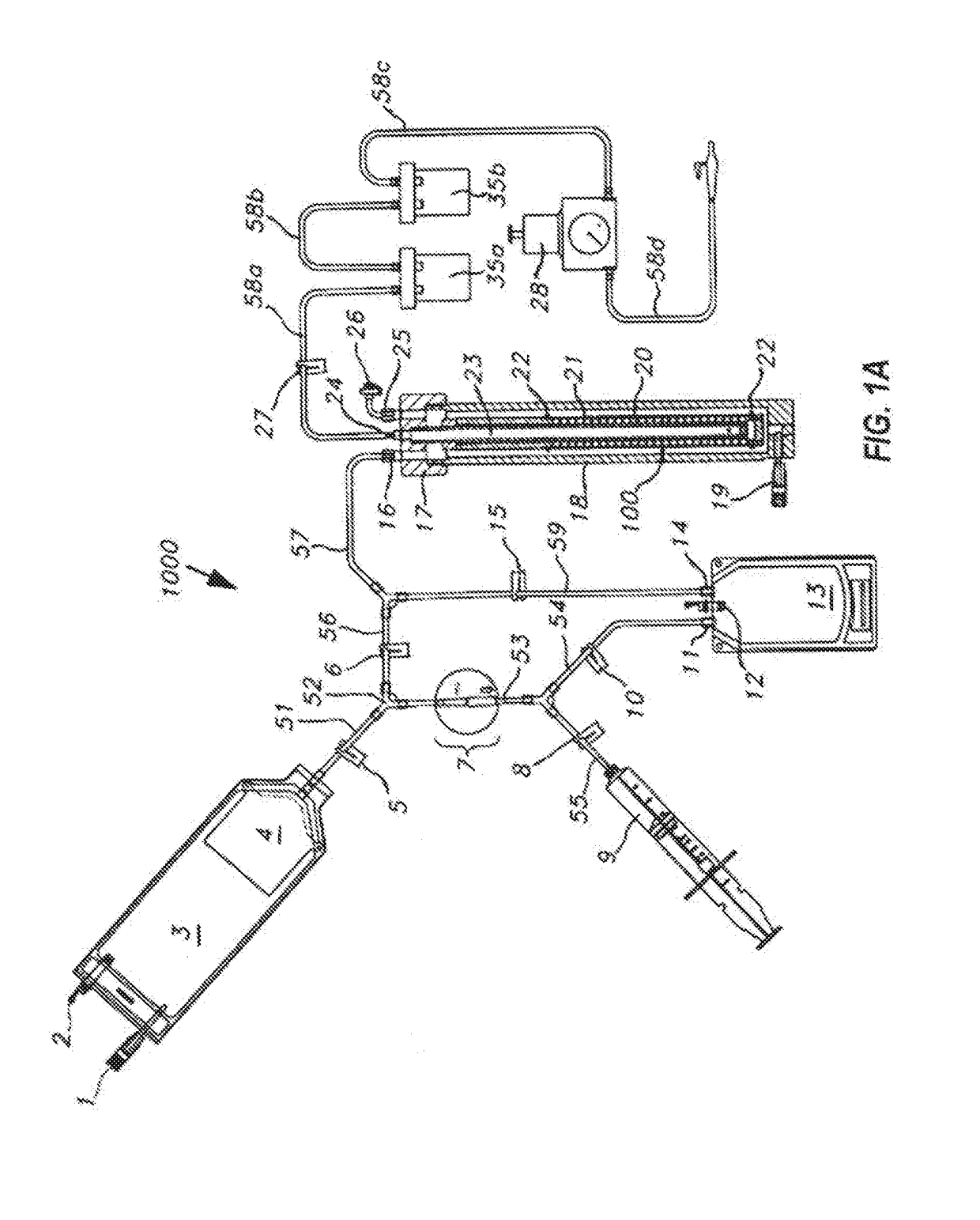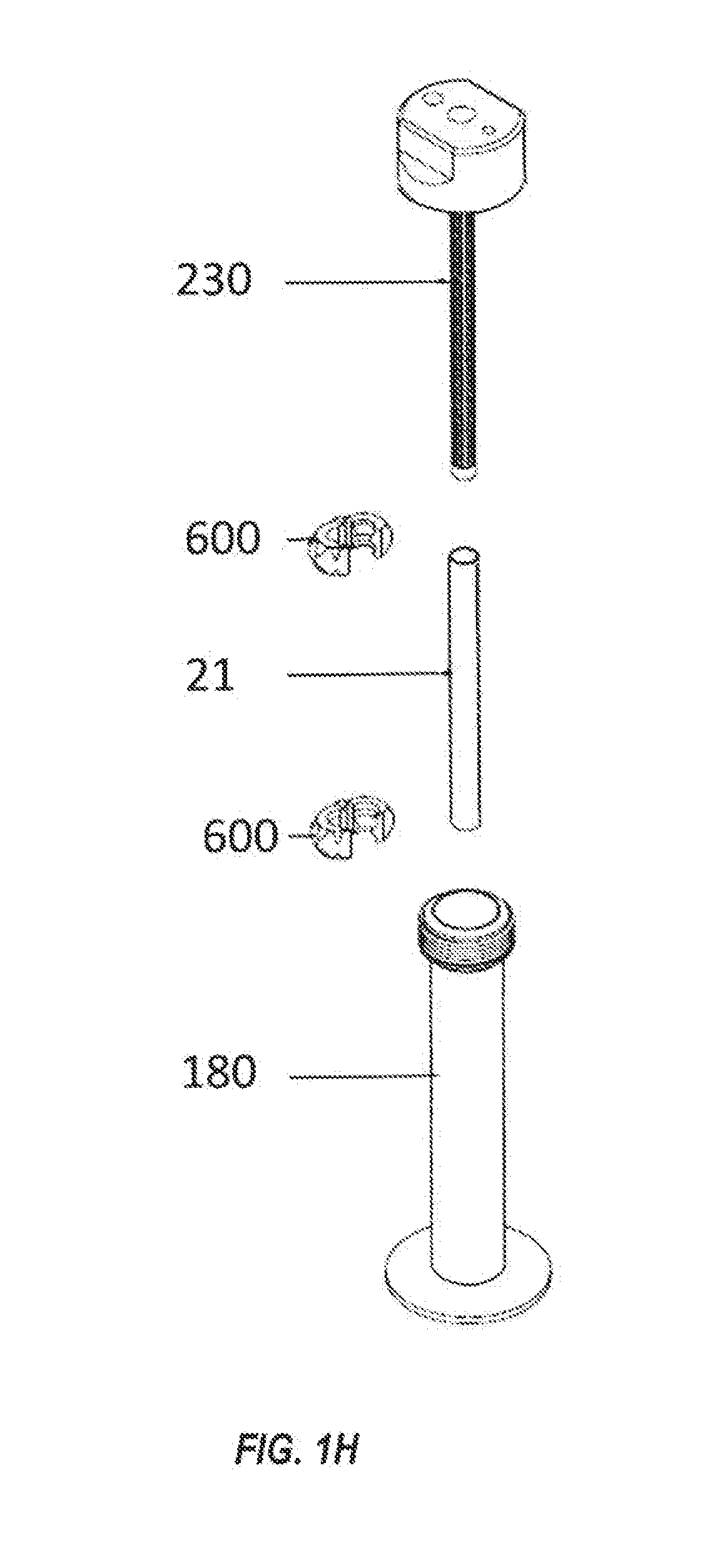Systems and methods for optimized patient specific tissue engineering vascular grafts
a tissue engineering and vascular graft technology, applied in the field of tissue engineered grafts, can solve the problems of complex use of synthetic grafts as conduits, thromboembolic complications, susceptibility to infection, etc., and achieve the effects of reducing the degree of macrophage infiltration, enhancing cell attachment efficiency, and reducing stenosis
- Summary
- Abstract
- Description
- Claims
- Application Information
AI Technical Summary
Benefits of technology
Problems solved by technology
Method used
Image
Examples
example 1
ng a Closed, Disposable Seeding System for Rapid Preparation of Patient Specific Tissue Engineered Vascular Grafts
Materials and Methods
Study Design
[0160]The first FDA approved tissue engineered vascular graft (TEVG) for the palliation of congenital cardiac anomalies is prepared via an open technique in an ISO-Class 7 clean room. Autologous bone marrow mononuclear cells (BMMNCs) are enriched by density gradient centrifugation and subsequently vacuum seeded onto a biodegradable tubular scaffold. Autologous bone marrow mononuclear cells (BM-MNCs) are enriched by density-gradient centrifugation and subsequently vacuum seeded onto a biodegradable tubular scaffold. However, the time, labor, and resource-intensive nature of graft preparation along with the complexities of maintaining a GMP-compliant clean room limit the widespread adoption of this approach.
[0161]Attempts to optimize scaffold seeding have resulted in the development of a filter-based system for BM-MNC isolation and a closed...
example 2
Design of an Improved Tissue Engineered Vascular Graft
Materials and Methods
[0171]Study Design
[0172]To optimize the TEVG assembly and increase the patency of the TEVG, studies were carried out to determine optimal parameters including cell seeding dose, and graft incubation time after seeding. Studies investigating the effect of cell seeding dose and incubation time on tissue engineered vascular graft (TEVG) patency determined that increasing the BM-MNC dose and reducing incubation time is a viable strategy for improving the performance and utility of the graft.
[0173]Various doses of bone marrow-derived mononuclear cells (BM-MNCs) were seeded onto TEVGs, incubated for 0 or 12 hours, and implanted in C57BL / 6 mice. Different doses of human BM-MNCs were seeded onto TEVGs and measured for cell attachment. To optimize the TEVG, a murine model to investigate the cellular and molecular mechanisms underlying vascular neotissue formation in the TEVG was developed (Roh, et al. Biomaterials. 29...
example 3
al Study of Patient-Specific Nanofiber Tissue Engineered Vascular Grafts Using Three-Dimensional Printing in a Sheep Model
Materials and Methods
[0221]Study Design
[0222]Tissue-engineered vascular grafts (TEVGs) can overcome limitations of current approaches for reconstruction in congenital heart disease by providing biodegradable scaffolds on which autologous cells proliferate and provide physiologic functionality. However, current TEVGs do not address the diverse anatomic requirements of individual patients. Patient specific TEVGs were therefore constructed using a combining 3D-printing and electrospinning technology.
[0223]An electrospinning mandrel was 3D-printed after computer-aided design based on preoperative imaging of the ovine thoracic inferior vena cava. TEVG scaffolds were then electrospun around the 3D-printed mandrel.
[0224]Six patient-specific TEVGs were implanted as cell-free inferior vena cava (IVC) interposition conduits in a sheep model and explanted after 6 months for...
PUM
| Property | Measurement | Unit |
|---|---|---|
| Incubation time | aaaaa | aaaaa |
| Incubation time | aaaaa | aaaaa |
| volume | aaaaa | aaaaa |
Abstract
Description
Claims
Application Information
 Login to View More
Login to View More - R&D
- Intellectual Property
- Life Sciences
- Materials
- Tech Scout
- Unparalleled Data Quality
- Higher Quality Content
- 60% Fewer Hallucinations
Browse by: Latest US Patents, China's latest patents, Technical Efficacy Thesaurus, Application Domain, Technology Topic, Popular Technical Reports.
© 2025 PatSnap. All rights reserved.Legal|Privacy policy|Modern Slavery Act Transparency Statement|Sitemap|About US| Contact US: help@patsnap.com



